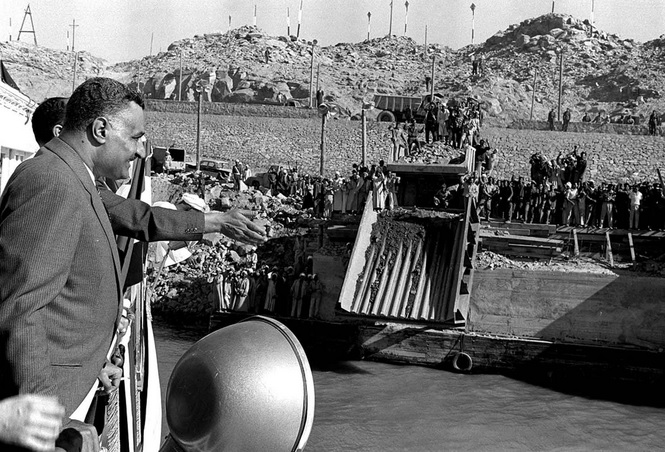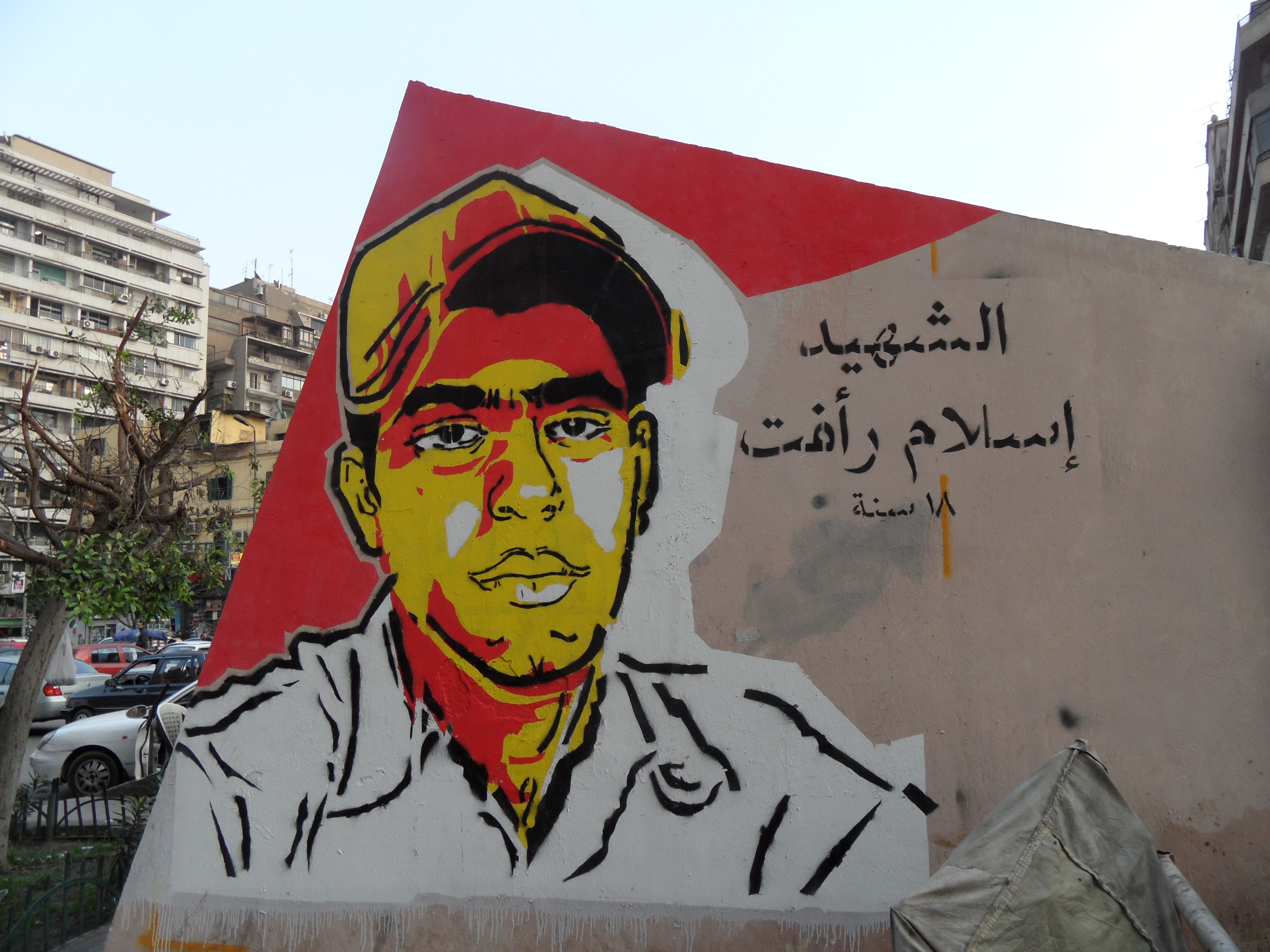Narratives in conflict
There’s nothing special regarding the way in which memory is fashioned in the Middle East; one finds similar processes elsewhere in the world. But one aspect to think about in the Middle East as elsewhere is, how is individual experience and collective experience fashioned into distinct memories? In other words, what kinds of narratives make sense of people’s experiences?
Something that one notices very quickly in the Middle East as elsewhere is the fact that those are in contention in many ways. People’s individual experiences don’t match up to the official or collective memory that is being projected. At the same time, the terrain of collective memory itself becomes a battlefield for those who have very different views about not only what happened, but the significance of what happened. You see that playing itself out in art, in literature and, of course, in the streets and in the ways in which regimes seek to legitimise themselves.
One might look at the ways in which memory is a contested zone across the Middle East and North Africa in a number of interesting examples. In the heroic period of Nasserism and the construction of the Aswan High Dam, which was one of the great achievements of the Nasserist regime, one of the features of the regime was to publicise the heroism of the workers themselves, saying these are Egyptians making a new Egypt. There was a whole repertoire of heroic songs, panegyrics and films.
But equally, for those for whom the experience of working on Aswan High Dam was not quite as heroic as the regime wanted to portray, there was a whole other repertoire of songs that showed labour disgruntlement and attacked favouritism. There was also the whole poetic and song-filled repertoire of the Nubian inhabitants of the Aswan area, who had been evacuated from their homes because they were getting in the way of development and the great lake, Nasser Lake, that was going to emerge. So these different voices have different ways of memorising and commemorating this experience. Of course, in the nature of the regime at the time, those voices were not heard. What’s interesting is the research that people have done since, capturing some of those voices, to show that.
Another experience would be the reassertion of Amazigh or Berber identity in North Africa, particularly in Algeria, where the regime had been very assiduous in promoting an Arab image and an Arab identity for the Algerians. One of the points made by many of the Amazigh activists was that Algeria certainly had an Arab history, but it also had an Amazigh or a Berber history, which had simply been written out of the official version. The regime at the time tried to stifle and censor this history, and then eventually came to recognise it. Now, it is a much more recognised part of Algerian identity and history. But those memories and that identity would have been written out without the activism of Algerian Amazigh activists.
Colonial memories in the Middle East
The memories of the colonial period across much of the Middle East and North Africa are quite mixed in a number of senses. For one, the definition of many of the States of the Middle East and North Africa is thanks to colonialism. The irony is that, for instance, the symbol of Palestinian nationalism is the map of Palestine, and yet the map of Palestine was drawn up in Whitehall in London. What had begun as an imperial adventure becomes incorporated into Palestinian self-identity and self-definition.
The other area in which colonial memories are very much part of the inheritance and the collective memory is in language: the status of French in North Africa and the growing status of English across much of the Gulf, the Arabian Peninsula and the Levant. The attitudes towards French and English are often split, because there is a realisation that these languages do represent access to education and to opportunities that might otherwise be denied. At the same time, there is the realisation that these languages may have pernicious effects on not only the quality of local languages, but also the nature of local culture.
Some are more relaxed about that than others, and others find that it’s a corrupting influence. Within the societies of the Middle East and North Africa, there is a continuing struggle about what kind of language is used. Is it going to be the everyday language, which sometimes incorporates French, Italian, English and whatever happens to be there? Or is it going to be the formal classical Arabic that is spoken on the news and rarely spoken in the streets, unless people want to impress someone else? Or are you going to go the whole way and become a kind of half-Francophone, half-Anglophone country? These are real questions of identity and memory, and they understandably provoke very strong passions.
Using art to commemorate history
Art has become, and always has been, a powerful way in which one can communicate images of the past and images of the present. It becomes affective in the sense that people are involved in it in some form, so it grabs their attention.
A very good example is the famous Nasb al-Hurriyah, the Freedom Monument, which was commissioned after the Iraqi revolution in 1958 to commemorate the liberation of the Iraqi people. The monument was made by a wonderful Iraqi sculptor, Jewad Selim. The regime that commissioned it, headed by Abd al-Karim Qasim, effectively a military dictator who had led the revolution, insisted that the central figure liberating the Iraqis should be a soldier. And initially, there had been a proposal that it shouldn’t be a soldier because the Iraqis had freed themselves.
The Nasb al-Hurriyah is an extraordinary long wall; it’s effectively a narrative of Iraqi history up to the moment of liberation. What’s interesting is that although Jewad Selim had to put a soldier in the middle of it, there are a lot of other narratives going on which don’t necessarily conform to those of the official regime. There are narratives of women’s strength, questions about Islam and questions about workers and peasants. These subjects weren’t necessarily acceptable, but in the frame of an extraordinary monument to the liberation of Iraq, they were deemed acceptable. And the monument’s artistic quality is unimpeachable.
There is a sense in which even within a commissioned work to commemorate a great event, there can be different versions. The monument stands in Tahrir Square (Liberation Square) in Baghdad, and since 2015, it has become a focus of mass popular demonstrations against precisely the lack of liberation that Iraqis suffer under the present regime. So a monument to a certain history can also become a powerful symbolic asset in a present struggle.
The art of destruction
One of the features of many countries in the Middle East and North Africa, particularly under authoritarian rulership, was that rulers wanted to put up public monuments to themselves in which they would demonstrate their leading role in the revolution in the liberation of the country. And one of the features of the uprisings of 2010–11 is that these, of course, immediately became targets.
Interestingly, across North Africa, but also in the Middle East, the very prominence of the statues or the huge portraits of Ben Ali in Tunisia, Mubarak in Egypt, Assad in Syria and others elsewhere became the focal point of what one might call a very developed art of destruction. Initially, the artistry was in the creation of these extraordinary works – both Assad and Mubarak employed North Korean artists to paint the most outrageous pictures, demonstrating that they were the fathers of the nation, that every Syrian or Egyptian gathered under their protection. These immediately became targets of the revolution, and the very defacement of power became an artistic act in itself.
The role of art in the Arab uprisings
One of the key aspects of all artistic intervention is that it disrupts things in many ways. The disruption of art in the Arab uprisings is an important part of the reappropriation of public space in particular. Of course, long before the uprisings, artists had been creating works of art that were deeply subversive, but they hadn’t had wide circulation.
What happened in 2010–11 is the eruption of this into the streets. One might argue that the massive public demonstrations and the symbolic forms they took is an art form in itself, a kind of performance art, whereby people have put their bodies in the public space, reappropriating it from the regimes that have effectively turned these public spaces into military parade grounds.
But the visual arts or songs also became ways of reappropriating the public space, and this took a number of forms. Very powerfully, some of them were focused on the martyrs, those who had been killed as a result of the demonstration. So you have artists like Ganzeer in Egypt and Zoo Project in Tunisia who commemorate martyrs not just as an abstract martyrdom, but as individuals. They are named and identified as people who have fallen as a result of regime violence. These very moving portraits of them are displayed in cities at various moments.
Reasserting women’s voices
One of the aspects of resistance that has been so powerful has been the rediscovery and the reassertion of women’s voices as full citizens of the republics of North Africa and the Middle East. Again, the kinds of art and films that have been produced are eloquent and powerful narratives suggesting that there are other voices to be heard. They both draw attention to the injustices committed against women, but also against the State’s indifference to those injustices.
In Egypt, Tunisia, Iraq and Lebanon, there have been extraordinarily powerful examples of the ways in which women have used novels, films and the visual arts to assert not simply their right to exist, but also that the overcoming of prejudice isn’t just the overcoming of the prejudice of the State itself. In other words – and this was much more awkward for many people to accept – it’s the realisation that women’s resistance needed to take place within the resistance movement itself to ensure that the resistance wasn’t just in the name of the male activist as the archetypal resistor. Resistance wasn’t just against the State, but against all the forms of unjust power that kept women subordinated.


